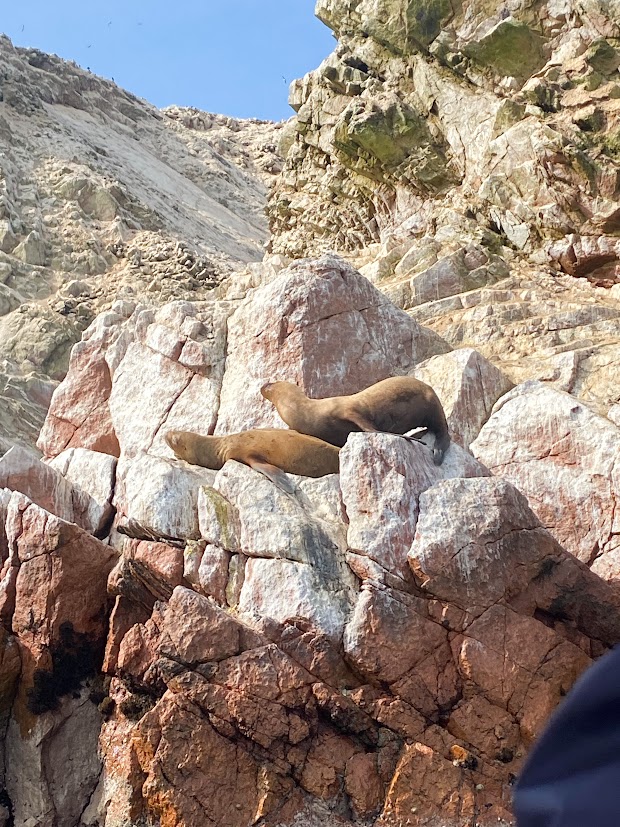When visiting Latin America, particularly Peru, some of the most well-known and sought-after tourist attractions are set against a background of nature. With the Amazon forest and the Andes mountains occupying a large part of the region, climate change has particularly affected the landmarks of South America. As global temperatures continue to rise in recent years, the region’s natural landscape has suffered, particularly in Peru’s Ica and Paracas regions, whose primary agricultural and touristic economy has been immensely affected. Climate change has also severely increased the effect of the El Niño phenomenon, causing a rapid decline in the flora and fauna worldwide, for example, the Humboldt penguin and several species of sea lions around the coast of Peru.
El Niño is a weather phenomenon that occurs in the Pacific Coast of South America at irregular intervals of around two to seven years. National Geographic describes this weather pattern as the unusual warming of surface waters. The intensity of this phenomenon can vary from weak temperature increases (approximately 4 to 5 degrees Fahrenheit) to intense increases (approximately 14 to 18 degrees Fahrenheit), which are understood to be the result of global warming. As the waters rise in temperature, the upwelling – a maritime phenomenon that elevates cold nutrient-rich water to the ocean’s upper layers – becomes absent from the region. This is especially detrimental for the many species, like the Humboldt penguin, who rely on the waters normal dynamic to survive. This phenomenon therefore disturbs the migratory patterns of the region’s fauna. It pushes the fauna towards the south of Chile, where the waters are much colder and thereby more suitable for the respective species.
The Ica and Paracas region has shown itself to be particularly vulnerable to the effects of El Niño as its economy centers around agriculture and tourism. The lack of upwelling and warming weather is particularly problematic as the major tourist attractions in Paracas are the Ballestas Islands and the Paracas National Reserve. These attractions are relevant as a result of the species traditionally in abundance. The Ballestas islands, for example, are home to the Humboldt penguin, which is now vulnerable to extinction, as well as various species of sea lions. The absence of upwelling and its reduction of animal populations, has damaging effects on tourism during peak seasons.
It is also important to note that El Niño brings heavy rains to regions that are otherwise unaccustomed to them. Flooding is exceedingly common during El Niño years in Peru, particularly in areas where the soil is mainly composed of clay. Heavy rains and landslides are reported in the Andean regions of Tumbes, Piura, Lambayeque, La Libertad, and the capital Lima. The uncharacteristic rains in these regions disrupt ecological systems further.
Having made the trip to the region twice, in December of 2023 and December of 2019, I have had the unfortunate firsthand experience of witnessing the decline in animal populations and the fauna of Peru. My group observed approximately 20 sea lions and Humboldt penguins during my first visit. We were told that this number was relatively low as, typically, hundreds of animals can be spotted during peak season. In 2023, the numbers had drastically reduced further. Tour guides noted that most of the animals had departed the area in favour of the colder waters of Chile and surmised that the lack of animals was likely due to the increasing intensity of El Niño.
Furthermore, travellers typically do not need to pack umbrellas in trips to Peru, even during the rainy season. The capital of Lima is not a place where torrential rains are common and, thus, rain gear is usually unnecessary. The winter season is instead characterized by fog, and rainfall is rarely reported in the summer. However, in December of 2023 heavy rainfall shocked the region, especially Lima. Such weather patterns were alarming to individuals of multiple generations, reinforcing its unprecedented nature.
It seems unlikely that the El Niño phenomenon will lessen without significant changes in policies by the Peruvian and international governments. According to the Peruvian government, high temperatures due to El Niño are expected to continue until, at the latest, June 2024. Emily Becker of the National Oceanic and Atmospheric Administration noted that the El Niño event in December 2023 was anticipated to be “historically strong.” With high levels of rainfall experienced in Lima and other regions, the Peruvian government is working more than ever before to aid in the fight against climate change. In 2013, Peru joined the Climate and Clean Air Coalition and, in 2019, introduced the National Program for Sustainable Urban Transport. While these changes show the government is heading in the right direction, solely minuscule changes will be made without significant updates to existing infrastructures.
Edited by Lucy de Cartier

